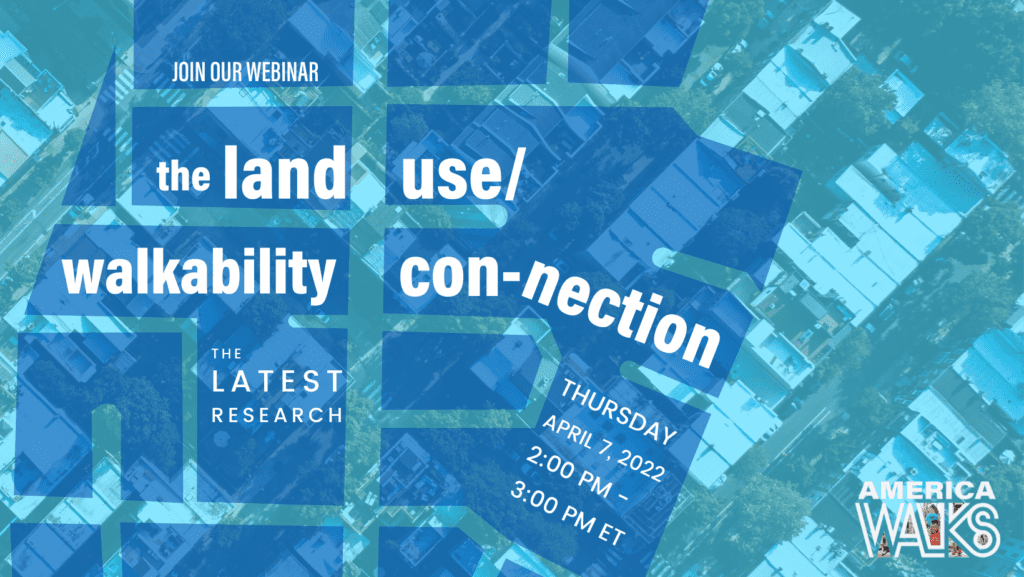
Statistics about walkability are easy enough to quote. They’re harder to decipher within the greater context or public health, land use, and urban planning. We often blame people for their behavior, especially when it comes to health and fitness — but we have to go deeper. We have to ask questions like “what is it about a community that leads to more walking and better health – and what do we need to change to get there?”
Join America Walks for a webinar that seeks to untangle the various factors that influence behavior, how land use patterns drive inequity, and the known and quantifiable health benefits of building our communities differently.
Walkability and Land Use: Where They Intersect
This webinar provides an overview, historical account, and future directions for walkability as a planning construct. Tune in to learn about how walkability is measured and the mechanisms through which it impacts health, climate change, and social justice. This session will also demonstrate how researchers and practitioners are working together to apply new walkability based evidence to transportation and land use decision making.
Join Dr. Lawrence Frank, a professor and “walkability pioneer,” for an in-depth discussion about the intersections of urban planning, equity, development, public health, activity, and behavior. Dr Frank, who has been researching and writing for decades on the effects of the built environment on physical activity and health, has not only experience but proven impact. His previous work led to the development of WalkScore and he’s been cited tens of thousands of times.
The webinar will provide an overview of the land use factors affecting travel behaviors and therefore physical activity:
- Population density
- Street and transportation infrastructure
- Mix of uses
- Greenspaces, and
- The pedestrian environment
When this analysis is combined with other behavioral and environmental factors (diet, social interaction, air pollution, traffic safety, crime and noise) it is now possible to predict the effects of transportation planning on health, and quantify the costs of people-friendly design as compared to car-centric design. It can also show effects down to the census block level, critical to understanding impacts on racial equity.
Thursday April 7
2:00pm – 3:00pm ET
Planners, public health officials, advocates and government officials will learn about the tools that are now available to analyze local decisions, and how to use this information to center health and equity in transportation and land use decisions.
If you want to be up to date on the latest research – whether for planning, advocacy, or implementation – you want to be here.